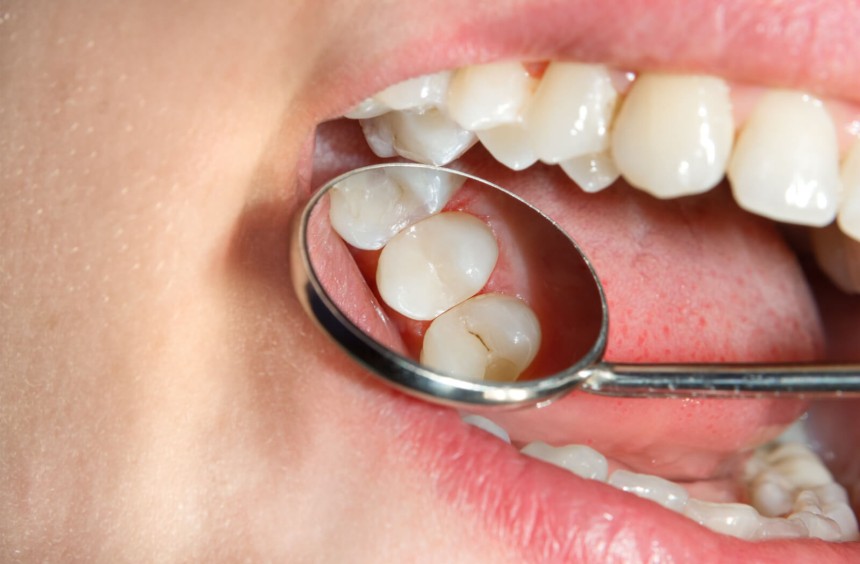
Understanding Tooth Cavities: Early Signs and Treatment Options
Our blog on understanding tooth cavities explores early signs and treatment options, helping you maintain healthy teeth.
Tooth cavities, also known as dental caries or tooth decay, are among the most common dental issues people face, regardless of age. Cavities form when bacteria in the mouth break down sugars in food, producing acids that erode the protective enamel layer of your teeth. If left untreated, cavities can lead to severe pain, infection, and tooth loss. Understanding the early signs of cavities and exploring available tooth cavity treatment Lancaster options can help protect your smile and maintain your oral health.
Here are the early signs of tooth cavities and treatments.
Early Signs of Tooth Cavities
Recognizing the early warning signs is the key to preventing tooth decay from progressing into more severe dental problems. Catching cavities in their initial stages can help you seek treatment before they become serious. Here are some of the early signs to watch for:
1. Tooth Sensitivity
One of the earliest indicators of a developing cavity is increased tooth sensitivity, especially when eating or drinking hot, cold, or sweet foods and beverages. The enamel has started to wear away, exposing the underlying layers of the tooth, which are more sensitive. If certain foods trigger discomfort, it may be time to visit your dentist.
2. Visible Holes or Pits in the Teeth
As cavities progress, you may notice visible holes or pits on the surface of your teeth. These marks result from enamel erosion caused by the acids produced by bacteria. If you spot these indentations in your teeth, you must visit your dentist as soon as possible.
3. Discoloration
Another early sign of tooth cavities is discoloration of the tooth. In the early stages, cavities may appear as white spots on the tooth’s surface. As the decay progresses, the affected area may turn brown or black. If you notice any changes in the color of your teeth, especially near the gum line, it could be a sign of tooth decay.
4. Pain or Tenderness
As cavities grow deeper into the tooth structure, they can cause pain or tenderness, especially when chewing or biting down. The pain may be sharp, throbbing, or constant, indicating that the decay has reached the tooth’s pulp, which contains nerves and blood vessels. If this pain persists, it’s a clear sign that you must seek dental treatment immediately.
5. Bad Breath (Halitosis)
Persistent bad breath, or halitosis, can be another sign that tooth decay is developing. The bacteria responsible for cavities release sulfur compounds that contribute to foul-smelling breath. Cavities could be the culprit if brushing, flossing, or mouthwash don’t eliminate your bad breath.
Treatment Options for Tooth Cavities
Once a cavity has formed, treatment is necessary to stop the decay from worsening and to restore the tooth’s function and appearance. There are several treatment options available depending on the severity of the cavity.
1. Fillings
A filling is usually the most common treatment option for small to moderate cavities. The decayed portion of the tooth is removed, and the cavity is cleaned before being filled with a material such as silver amalgam, composite resin, or porcelain. Fillings restore the tooth’s shape and function, allowing it to withstand the pressure of chewing again.
2. Crowns
If the cavity is extensive and has caused significant damage to the tooth, a crown may be necessary. A crown is a cap that covers the entire tooth, protecting it from further decay and restoring its appearance. Crowns are often made from durable materials such as porcelain or metal and are custom-made to fit your tooth.
3. Root Canals
In cases where the cavity has advanced deep into the tooth and infected the pulp, a root canal may be required. During a root canal procedure, the dentist removes the infected pulp, cleans the root canals, and seals the tooth to prevent further infection. Afterward, the tooth is typically restored with a crown for added protection and function.
4. Tooth Extractions
In some cases, when a cavity is too severe, and the tooth cannot be saved, extraction may be necessary. Tooth extraction is typically a last resort and is only performed when the tooth is beyond repair. Once the tooth is removed, options like dental implants, bridges, or dentures can be considered to replace the lost tooth.
5. Preventative Treatments
Preventive treatments can help prevent further decay if a cavity is detected early. Fluoride treatments, for example, can help remineralize the enamel and prevent small cavities from growing. Dental sealants may also be applied to the chewing surfaces of the back teeth to protect them from cavities.
Preventing Tooth Cavities
While treatment is essential for managing cavities, prevention is always better than cure. To minimize the risk of developing cavities, follow these preventive measures:
Brush your teeth at least twice a day with fluoride toothpaste.
Floss daily to remove food particles and plaque between your teeth.
Limit sugary snacks and drinks, as sugar feeds the bacteria that cause cavities.
Visit your trusted Lancaster dentist near me regularly for checkups and professional cleanings.
Use fluoride treatments or dental sealants, especially if you’re prone to cavities.
Tooth cavities can lead to significant dental issues if left untreated, but they are manageable with early detection and the proper treatment. By recognizing the early signs of tooth decay and seeking prompt dental care, you can protect your teeth and maintain your oral health. Regular dental checkups, proper oral hygiene, and a healthy diet are key to preventing cavities and ensuring your smile stays healthy for years. If you suspect you have a cavity, don’t hesitate to visit your dentist for an evaluation and treatment plan.


The Role of Forensic Science in Criminal Investigations Advanced Resea...
Yeezy Gap
Yeezy Gap, a groundbreaking partnership between Kanye West and Gap Inc., has redefined the...
